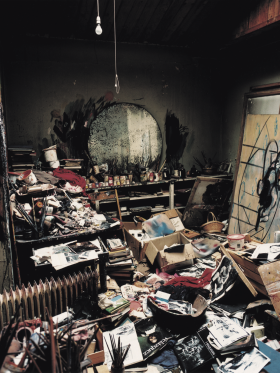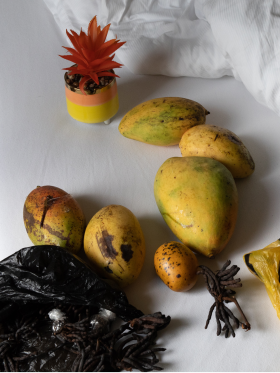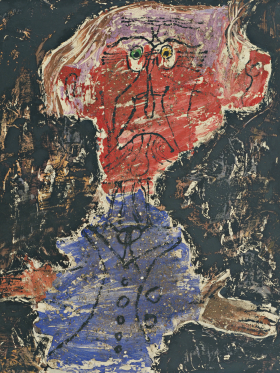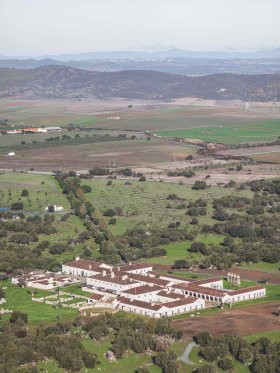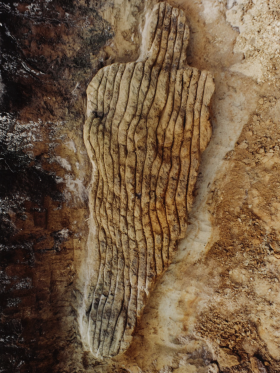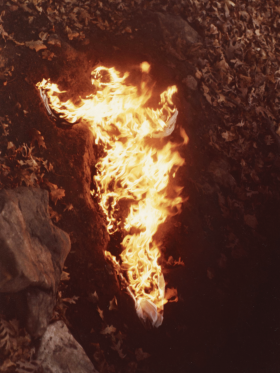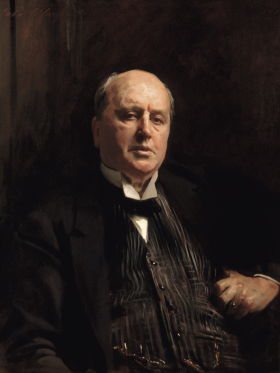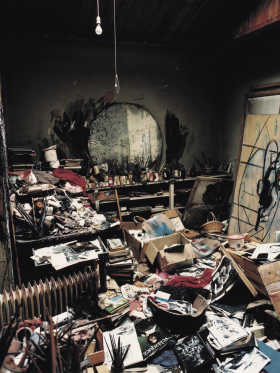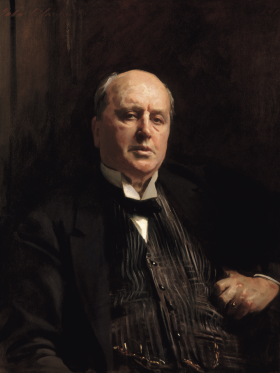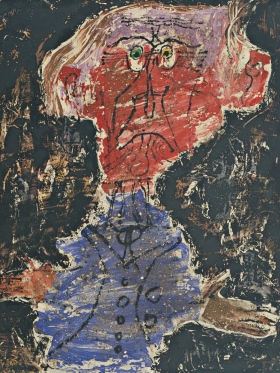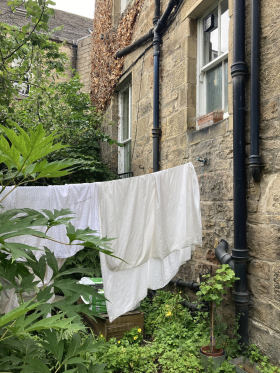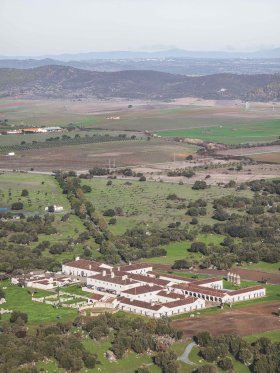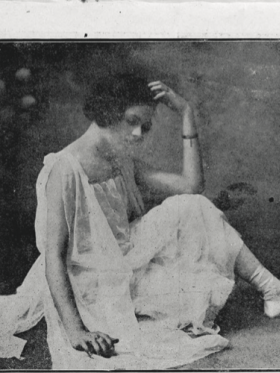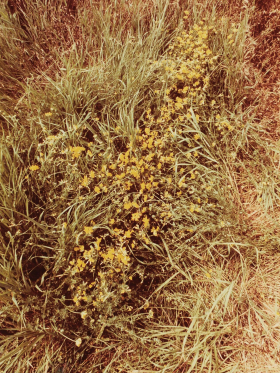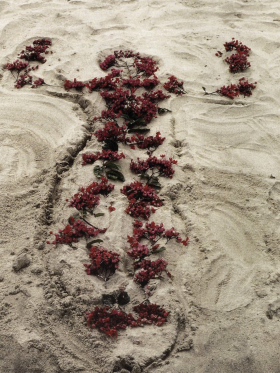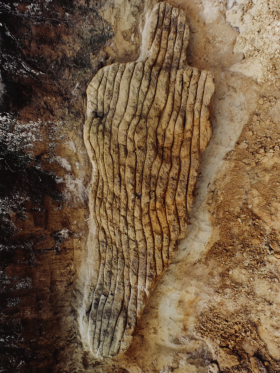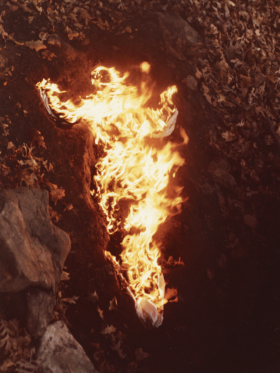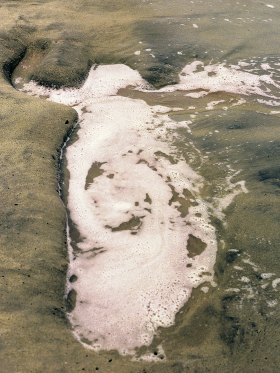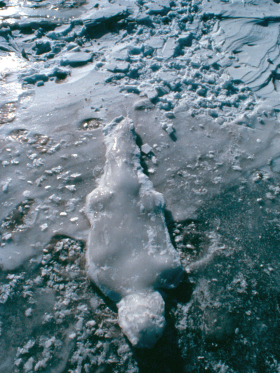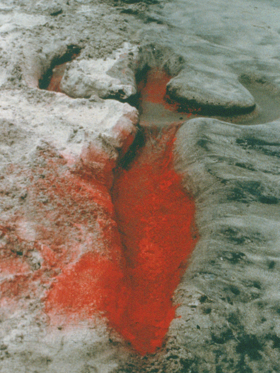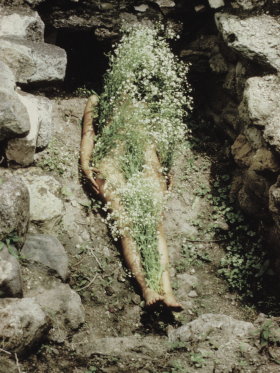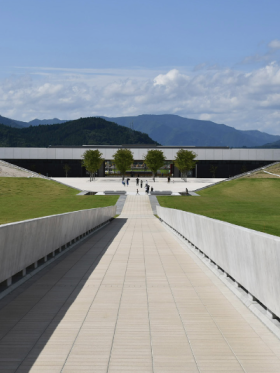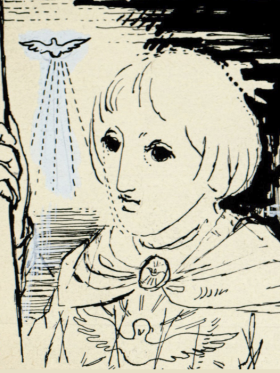
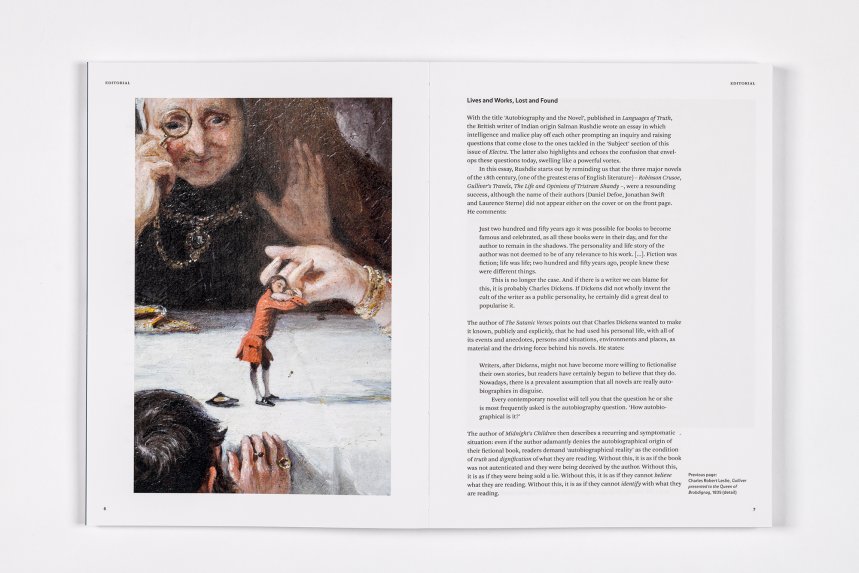
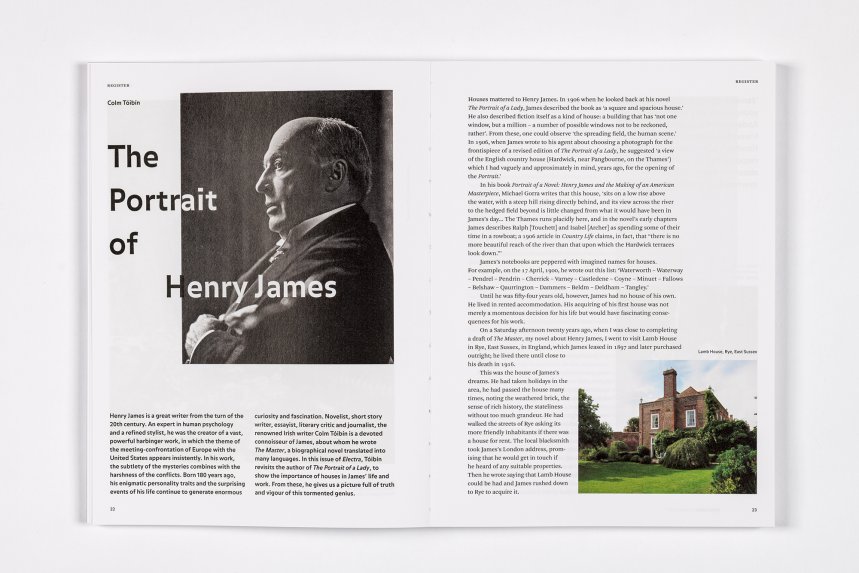
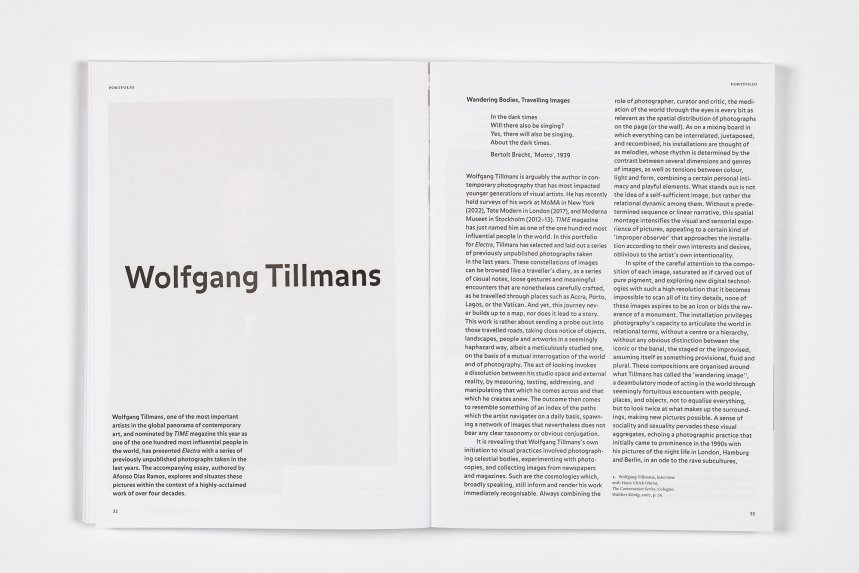
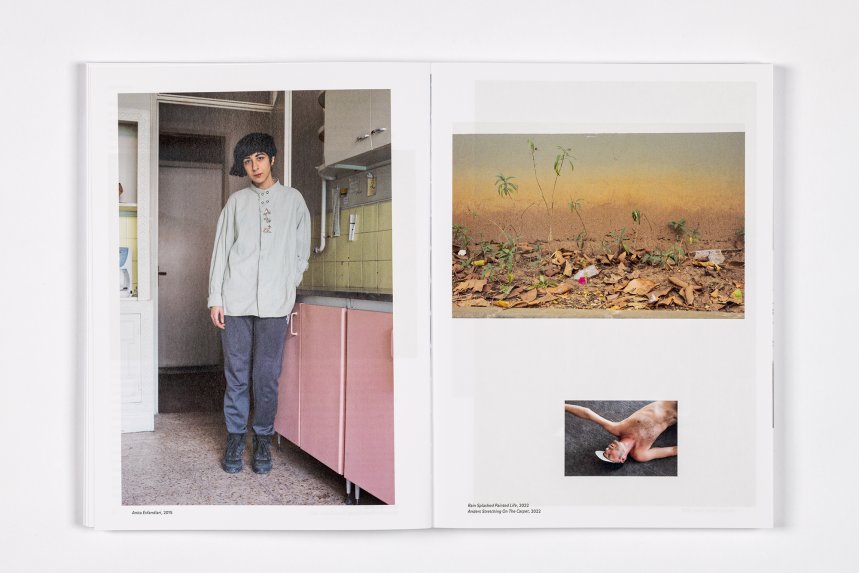

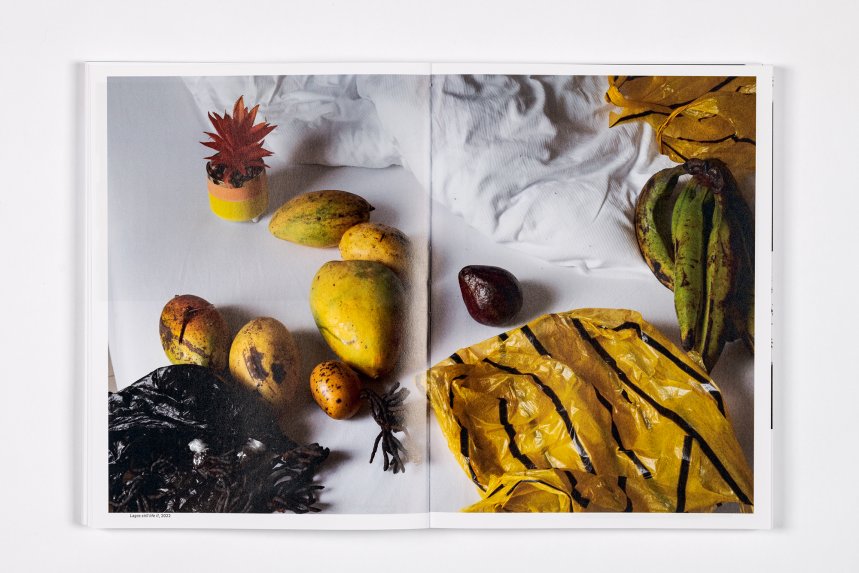
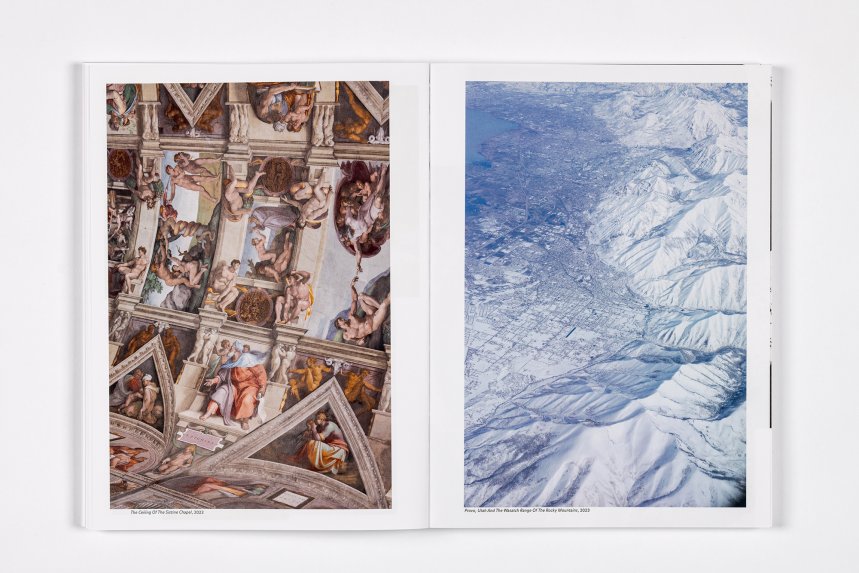
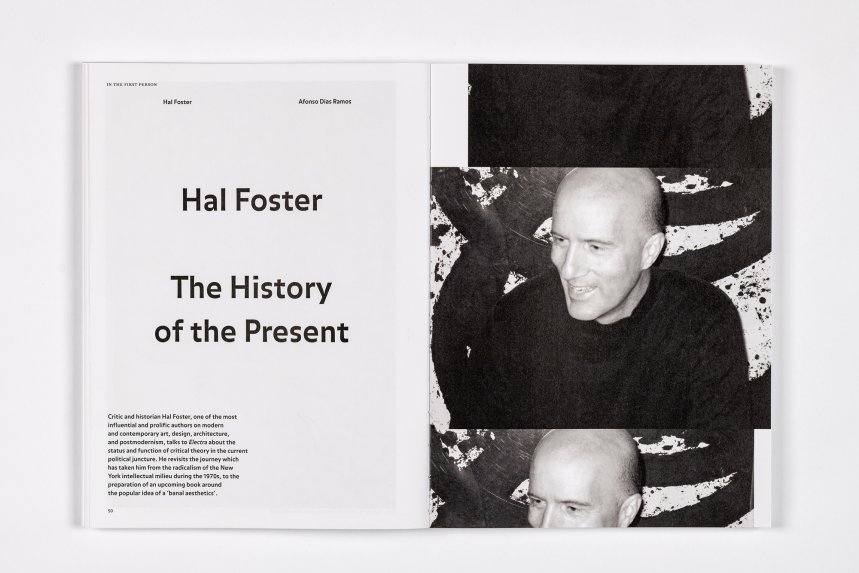
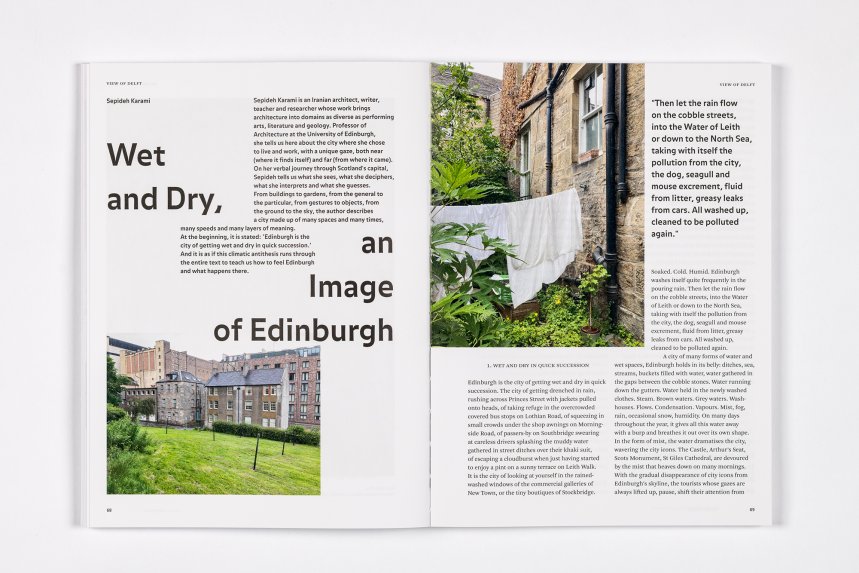
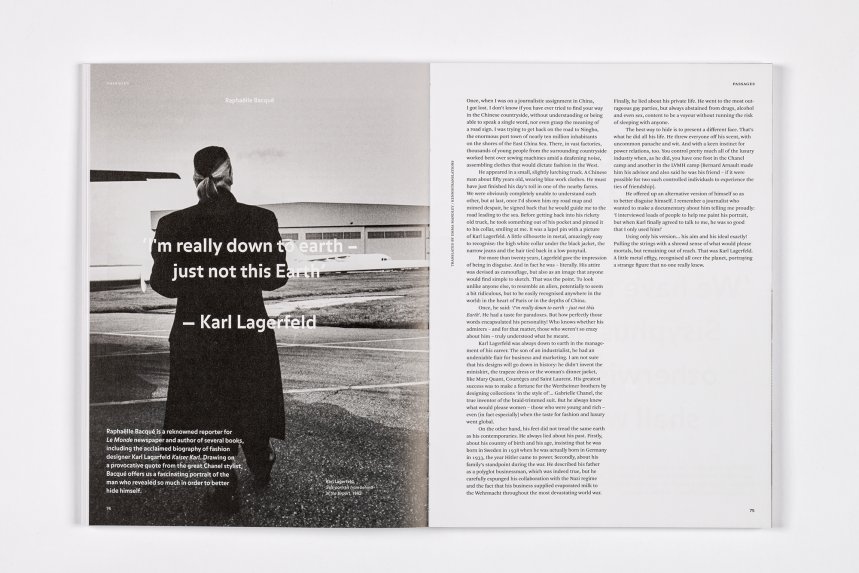
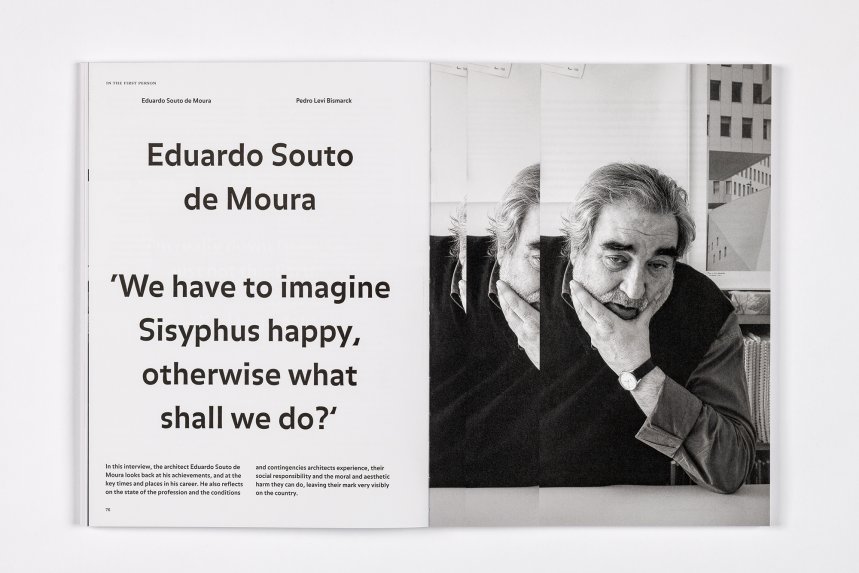
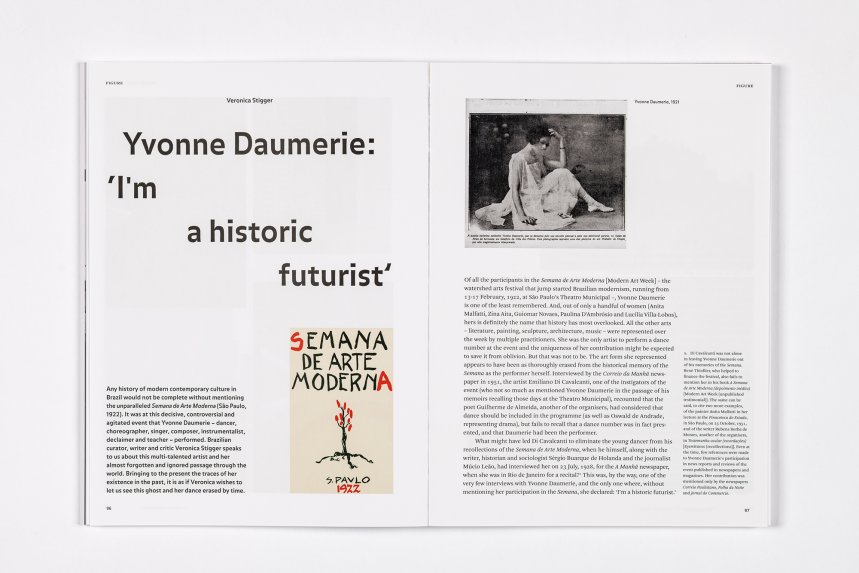
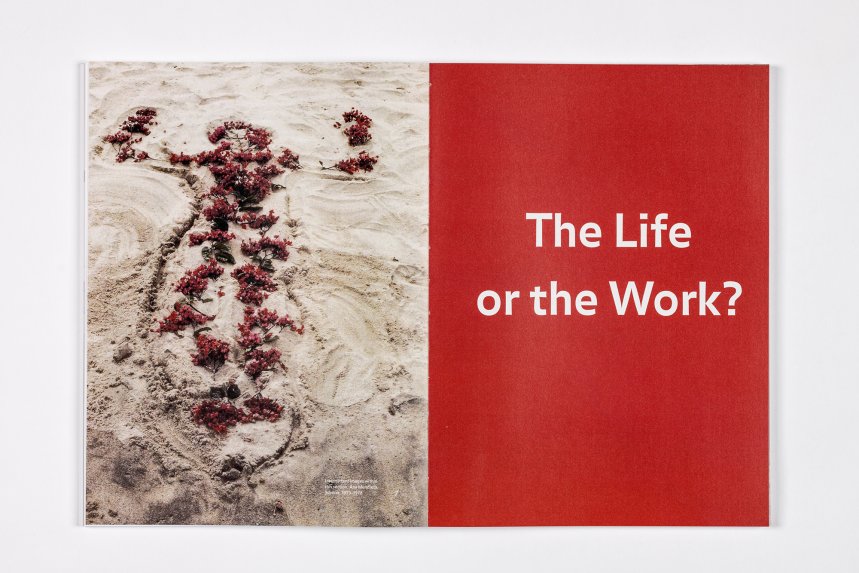
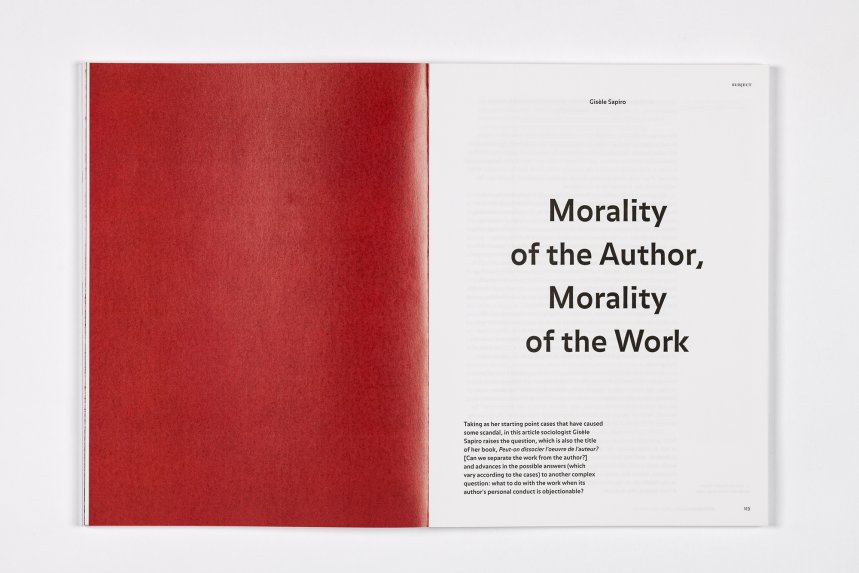
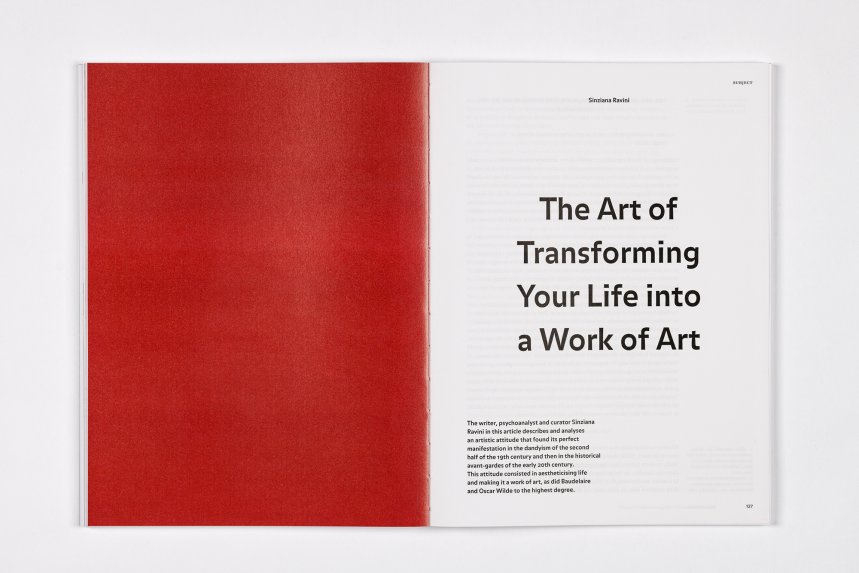
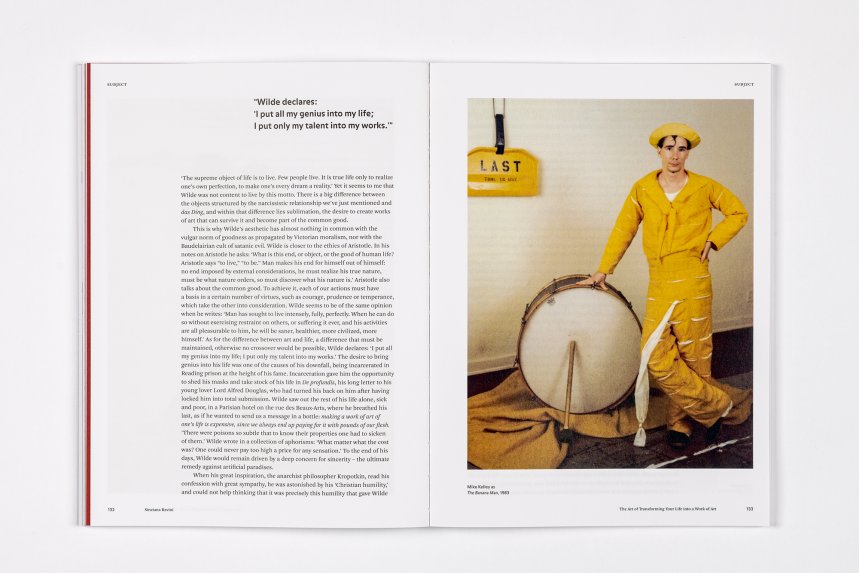
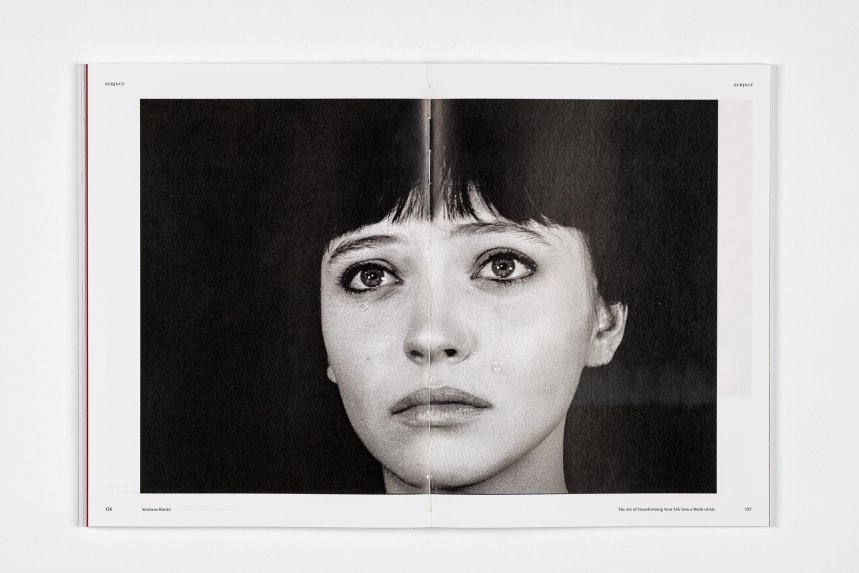
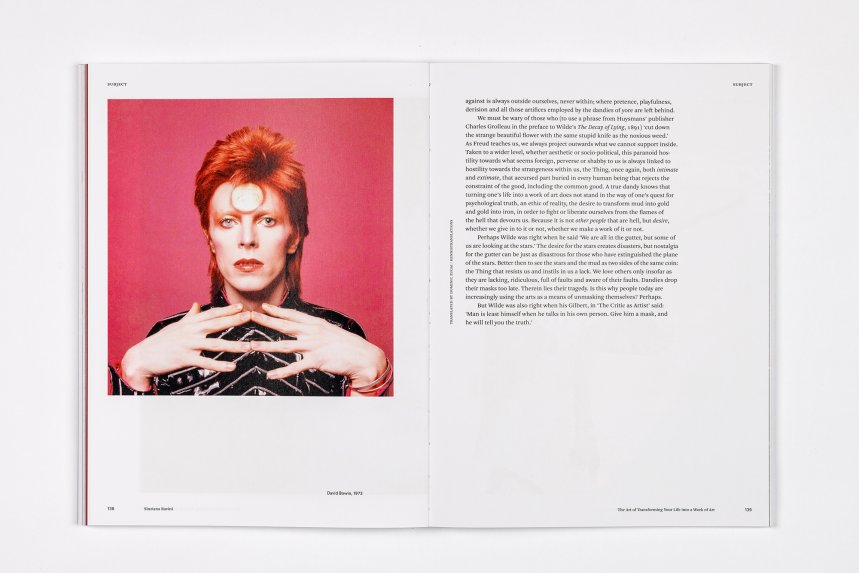
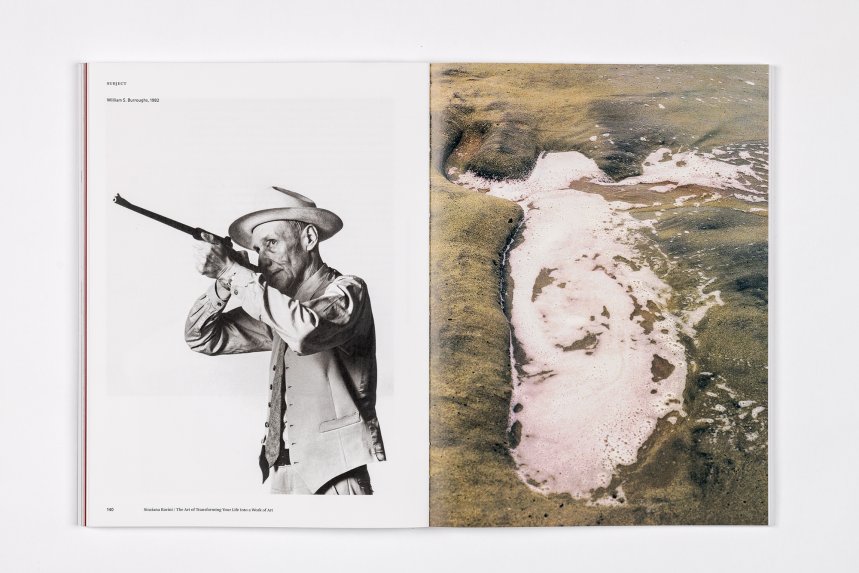


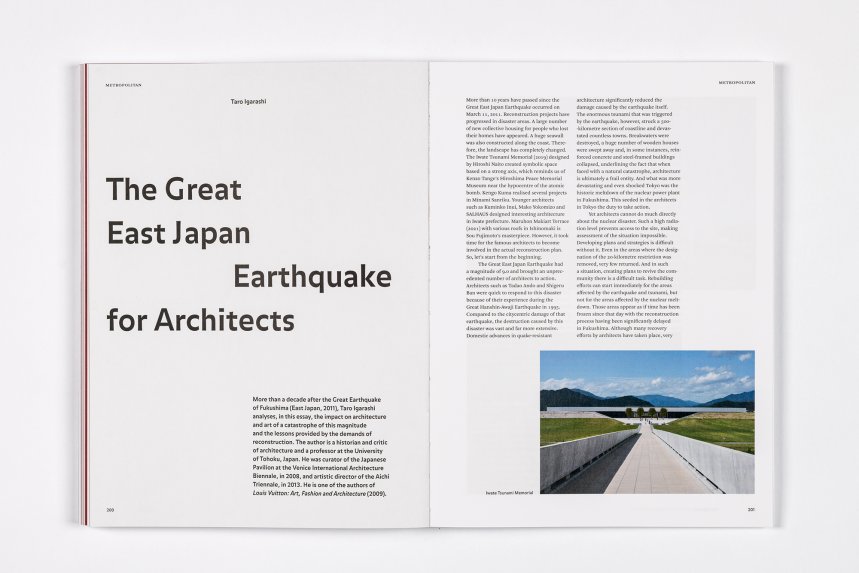

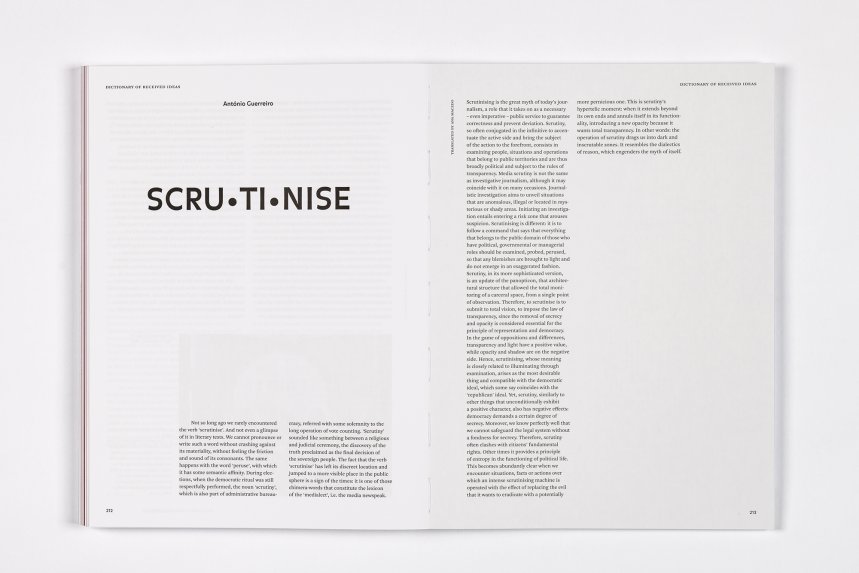
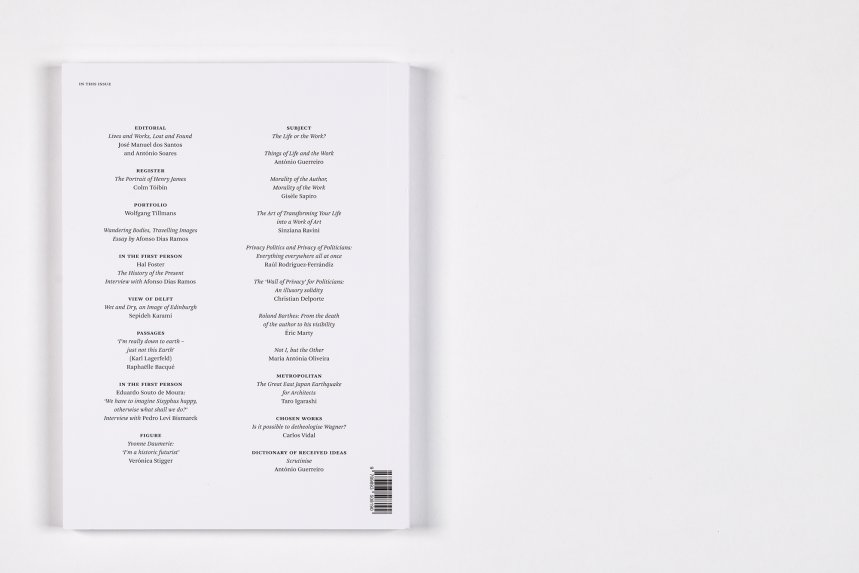
The relationship between the life and work of authors, artists and public figures has always been a subject of great controversy. In our time, this relationship has taken on a renewed and sharper importance and for this reason is the subject of focus in Electra 22. The public and the private, the author and the work, the morality of the work and the morality of the author, the person and their public mission, biographical material and the media space or life as an artwork are all issues that are explored through this section of the magazine, whose theme, due to its nature and scope, genealogy and history, is one of the most infinite and indefinable ever tackled in Electra. This dossier, entitled "The Life or the Work?", features articles by Giséle Sapiro, Sinziana Ravini, Christian Delporte, Éric Marty, Raúl Rodríguez-Ferrándiz and Maria Antónia Oliveira.
Wolfgang Tillmans, one of the most important artists on the global contemporary art scene, is the artist behind this issue's portfolio, which consists of a series of unpublished photographs taken in recent years. The accompanying essay by Afonso Dias Ramos explores and places these images in the context of a recognised body of work and a career spanning more than four decades.
The "In the First Person" section features two interviews: one with architect Eduardo Souto de Moura (Pritzker Prize 2011) who, in conversation with Pedro Levi Bismarck, reflects on the state of the profession, the social responsibility of the architect, and the conditions and contingencies for making architecture, while also going through his work and its decisive moments and places; the second is with American critic and historian Hal Foster, one of the most influential and prolific authors on modern and contemporary art, design, architecture and post-modernism.
Also in Electra 22, Colm Tóibín, renowned Irish writer, literary critic and journalist, revisits the vast body of work of Henry James, the great writer of the nineteenth and twentieth centuries, a refined stylist and profound judge of human psychology. Based on the importance of houses in the life and work of the author of Portrait of a Lady, Tóibin’s image of this tormented genius teems with truth and vigour.
Also in this issue, Iranian architect Sepideh Karemi tells us about the city she chose to live and work in, Edinburgh; Brazilian writer and curator Veronica Stigger reveals the story of artist Yvonne Daumerie and her time at the Semana de Arte Moderna [Modern Art Week] in São Paulo, 1922; Journalist Raphaëlle Bacqué offers a fascinating portrait of fashion designer Karl Lagerfeld; Carlos Vidal analyses the staging of Richard Wagner's The Ring of the Nibelung, directed by Valentin Schwarz; Taro Igarashi, architectural historian and critic, examines the impact of the Great Fukushima Earthquake on architecture and art; and António Guerreiro, in the Dictionary of Received Ideas section, writes about the word "scrutinise".
